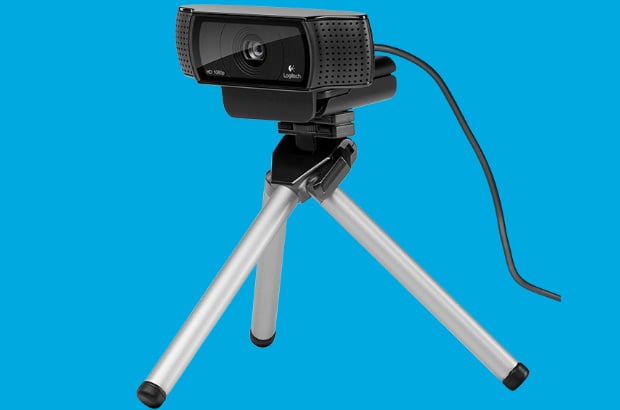Facepalm: Microsoft Windows 10 Anniversary Update Breaks Millions Of Webcams
Microsoft brought some cool new features and functionality to Windows 10 with its recently released (and much anticipated) Anniversary Update, the second major upgrade to the OS since it was released in July of last year. Unfortunately, the Anniversary Update has at least one unintentional side effect—it breaks webcams.
It doesn't break all webcams, but this is no small issue. Millions of popular webcams seem to be affected, including Logitech's popular C920 model, which is one we use at HotHardware for our Two And A Half Geeks video podcasts. The problem arises when an affected webcam tries to broadcast in HD, which because of a change in Windows can cause the video stream to freeze.

To understand the issue, it's important to first understand how webcams operate. Most webcams deliver video streams in a variety of formats, both compressed such as H.264 and MJPEG, and uncompressed such as YUV or NV12. Uncompressed data is easier to handle, but for webcams that are USB 2.0 devices, there's not enough bandwidth available to deliver an uncompressed Full HD 1080p video stream at 30 frames per second. To accommodate for this, webcams compress those streams.
That was all fine and dandy until the Anniversary Update came out, which contains code that stops webcams from being able to use MJPEG or H.264 encoded streams. The reasoning has to do with some technical details about a new camera sharing ability in Windows 10, but short and to the point, the decision has broken millions of webcams.
The most common symptom is that video streams are freezing. This isn't always apparent right away. When a webcam first initializes and beams video data, it could be doing so at a lower resolution to account for available bandwidth—maybe little Billy upstairs is hogging the bandwidth playing a video game while Suzie and her friends are huddled around an iPad watching Netflix. Whatever the case might be, once the camera bumps up to a higher resolution stream and tries to send compressed data, it simply freezes.
Freezing video isn't just a rare symptom on weird or niche setups, either. It happens in Skype and when using name brand webcams, among other configurations. Fortunately Microsoft is aware of the issue and is working on a fix, but it might not be ready until sometime next month. In the meantime, Windows expert Rafael Rivera posted a possible workaround on Twitter that involves making a change to the system registry.
It doesn't break all webcams, but this is no small issue. Millions of popular webcams seem to be affected, including Logitech's popular C920 model, which is one we use at HotHardware for our Two And A Half Geeks video podcasts. The problem arises when an affected webcam tries to broadcast in HD, which because of a change in Windows can cause the video stream to freeze.

To understand the issue, it's important to first understand how webcams operate. Most webcams deliver video streams in a variety of formats, both compressed such as H.264 and MJPEG, and uncompressed such as YUV or NV12. Uncompressed data is easier to handle, but for webcams that are USB 2.0 devices, there's not enough bandwidth available to deliver an uncompressed Full HD 1080p video stream at 30 frames per second. To accommodate for this, webcams compress those streams.
That was all fine and dandy until the Anniversary Update came out, which contains code that stops webcams from being able to use MJPEG or H.264 encoded streams. The reasoning has to do with some technical details about a new camera sharing ability in Windows 10, but short and to the point, the decision has broken millions of webcams.
The most common symptom is that video streams are freezing. This isn't always apparent right away. When a webcam first initializes and beams video data, it could be doing so at a lower resolution to account for available bandwidth—maybe little Billy upstairs is hogging the bandwidth playing a video game while Suzie and her friends are huddled around an iPad watching Netflix. Whatever the case might be, once the camera bumps up to a higher resolution stream and tries to send compressed data, it simply freezes.
Freezing video isn't just a rare symptom on weird or niche setups, either. It happens in Skype and when using name brand webcams, among other configurations. Fortunately Microsoft is aware of the issue and is working on a fix, but it might not be ready until sometime next month. In the meantime, Windows expert Rafael Rivera posted a possible workaround on Twitter that involves making a change to the system registry.
HKLM\SOFTWARE\WOW6432Node\Microsoft\Windows Media Foundation\Platform, add DWORD "EnableFrameServerMode" and set to 0. #webcamgate
— Rafael Rivera (@WithinRafael) August 19, 2016
Looking through the initial responses to his Twitter post, the trip seems to be working. Just be careful if you try it yourself. Whenever mucking around in the registry, it's a good idea to create a backup first, just in case something goes wrong.

